Types of Papers: Compare/Contrast
To write a compare/contrast essay, you’ll need to make NEW connections and/or express NEW differences between two things. The key word hereis NEW!
- Choose 2 things that could go in the same category, but are also quite different. Good choices might be:
- Basketball Football (both sports)
- Horses Cats (both animals, but different in many ways)
- Writing Singing (both art forms, but different in many ways)
- Gather your ideas bywriting down characteristics of each thing. Note the differences and similarities between them.
- Ask yourself these important questions before you begin writing your draft:
- Does my instructor want me to compare AND contrast, or am I only being asked to do one of those things?
- Are these 2 things similar and/or different, in at least one meaningful way?
- Do I know enough about my topic to write an effective compare/contrast essay about it?
Does my instructor want me to compare AND contrast, or am I only being asked to do one of those things?
Some instructors prefer that you only write about the differences between two things, while others want you to focus on explaining the similarities as well. Either way, you’ll need to make sure that your thesis statement reflects your instructor’s expectations. For example, if I wanted to write about Social Networking sites, I’d need to write different thesis statements depending on my compare/contrast assignment.
Sample thesis statement for contrast paper: In terms of social networking sites, Facebook focuses on presenting your daily life to others, whereas MySpace allows you to focus more on demonstrating your personal style.
Sample thesis statement for compare/contrast paper: While both Facebook and MySpace allow you to meet other users who have similar interests, only MySpace allows you to demonstrate your personal style.
Are these 2 things similar and/or different, in at least one meaningful way?
If you want to write a successful compare/contrast essay, you’ll need to avoid writing about really obvious differences and similarities. For example:
- We all know that horses are larger than cats.
- We also know that basketball teams contain less players than football teams.
Tell us something we don’t know (or might not notice)!
It would be better to write about how sensitive both horses and cats are to human needs and emotions. You could also suggest that though both basketball and football require a lot of teamwork, basketball players are expected to be a lot more versatile than football players.
You don’t have to be a genius to write an interesting compare/contrast essay–you just have to look at ordinary things in a new way!
Do I know enough about my topic to write an effective compare/contrast essay?
Unless you’re being asked to do some research as part of your compare/contrast project, make sure that you choose 2 things that you feel comfortable discussing, at length.
Your instructor may ask for multiple similarities and differences–make sure you’re prepared to write a well-developed, meaningful essay on a topic that you know well before you get started!
Organizing Your Compare and Contrast Paper
There are two primary ways to organize your compare and contrast paper.
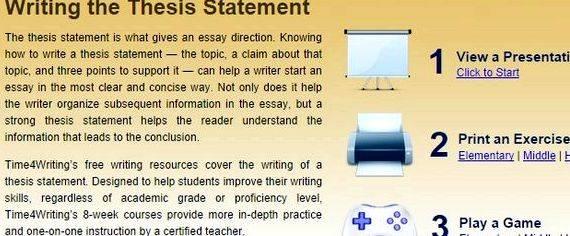
Chunking: placing all of the information for each individual subject in one place (chunk), and then using similarities as transitions.
Here’s a sample outline:
- Jane is distinct because
- Jane is similar to Alice in these ways
- Alice is distinct because
Piecing: giving pieces of the information for each individual subject in each paragrapharranging the information by topic rather than by subject.
Here’s a sample outline:
- Differences and Similarities in Jane and Alice’s appearances
- Differences and Similarities in Jane and Alice’s backgrounds
- Differences and Similarities in Jane and Alice’s interests
Sample Papers
Roane State Community College
We encourage the educational use of the OWL. The Terms of Use explains the specific permissions granted.
The RSCC OWL was born June 5, 1995. It’s among the oldest (and wisest) OWLs.
Comments about these pages should be directed to: Mike Hill. RSCC Learning Center Director.
The purpose of a compare and contrast essay is to analyze the differences and/or the similarities of two distinct subjects. A good compare/contrast essay doesn’t only point out how the subjects are similar or different (or even both!). It uses those points to make a meaningful argument about the subjects. While it can be a little intimidating to approach this type of essay at first, with a little work and practice, you can write a great compare-and-contrast essay!
Steps Edit
Part One of Four:
Formulating Your Argument Edit
Pick two subjects that can be compared and contrasted. The first step to writing a successful compare and contrast essay is to pick two subjects that are different enough to be compared. There are several things to consider when choosing your subjects: [1]
- You could pick two subjects that are in the same “category” but have differences that are significant in some way. For example, you could choose “homemade pizza vs. frozen grocery store pizza.”
- You could pick two subjects that don’t appear to have anything in common but that have a surprising similarity. For example, you could choose to compare bats and whales. (One is tiny and flies, and the other is huge and swims, but they both use sonar to hunt.)
- You could pick two subjects that might appear to be the same but are actually different. For example, you could choose “The Hunger Games movie vs. the book.”
Can you please put wikiHow on the whitelist for your ad blocker? wikiHow relies on ad money to give you our free how-to guides. Learn how .
Make sure that your subjects can be discussed in a meaningful way. “Meaningful” comparisons and contrasts do more than simply point out that “Topic A and Topic B are both similar and different.” A good compare and contrast essay will help your readers understand why it’s useful or interesting to put these two subjects together. [2]
- For example, ask yourself: What can we learn by thinking about “The Hunger Games” and “Battle Royale” together that we would miss out on if we thought about them separately?
- It can be helpful to consider the “So what?” question when deciding whether your subjects have meaningful comparisons and contrasts to be made. If you say “The Hunger Games and Battle Royale are both similar and different,” and your friend asked you “So what?” what would your answer be? In other words, why bother putting these two things together?
Brainstorm your topic. You probably won’t be able to jump straight from deciding on your topic to having a thesis, and that’s okay. Take a little time to brainstorm about how your chosen subjects are similar and different. This will help you see which points are the major ones you want to focus on, and can help guide you when you formulate your thesis.
- A “Venn diagram” can often be helpful when brainstorming. This set of overlapping circles can help you visualize where your subjects are similar and where they differ. In the outer edges of the circle, you write what is different; in the overlapping middle area, you write what’s similar. [3]
- You can also just draw out a list of all of the qualities or characteristics of each subject. Once you’ve done that, start looking through the list for traits that both subjects share. Major points of difference are also good to note.
Consider your main points. You won’t be able to provide a list of every single way in which your subjects are similar and/or different in your essay. (And that’s not the goal, anyway.) Instead, choose a few points that seem to be particularly important.
- For example, if you are comparing and contrasting cats and dogs, you might notice that both are common household pets, fairly easy to adopt, and don’t usually have many special care needs. These are points of comparison (ways they are similar).
- You might also note that cats are usually more independent than dogs, that dogs may not provoke allergies as much as cats do, and that cats don’t get as big as many dogs do. These are points of contrast (ways they are different).
- These points of contrast can often be good places to start thinking about your thesis, or argument. Do these differences make one animal a superior type of pet? Or a better pet choice for a specific living situation (e.g. an apartment, a farm, etc.)?
Develop your thesis. There are many directions a compare-and-contrast thesis can take, but it should always make an argument that explains why it’s useful to put these two subjects together in the first place. For example:
- Show readers why one subject is more desirable than the other. Example: “Cats are better pets than dogs because they require less maintenance, are more independent, and are more adaptable.”
- Help readers make a meaningful comparison between two subjects. Example: “New York City and San Francisco are both great cities for young professionals, but they differ in terms of their job opportunities, social environment, and living conditions.”
- Show readers how two subjects are similar and different. Example: “While both The Catcher in the Rye and To Kill a Mockingbird explore the themes of loss of innocence and the deep bond between siblings, To Kill a Mockingbird is more concerned with racism while The Catcher in the Rye focuses on the prejudices of class.”
- In middle school and high school, the standard format for essays is often the “5-paragraph form,” with an introduction, 3 body paragraphs, and a conclusion. If your teacher recommends this form, go for it. However, you should be aware that especially in college, teachers and professors tend to want students to break out of this limited mode. Don’t get so locked into having “three main points” that you forget to fully explore your topic.
Part Two of Four:
Organizing Your Essay Edit
Decide on a structure. There are several ways to organize a compare-and-contrast essay. Which one you choose depends on what works best for your ideas. Remember, you can change your organization later if you decide it isn’t working. [4] [5]
- Subject by subject. This organization deals with all of the points about Topic A, then all of the points of Topic B. For example, you could discuss all your points about frozen pizza (in as many paragraphs as necessary), then all your points about homemade pizza. The strength of this form is that you don’t jump back and forth as much between topics, which can help your essay read more smoothly. It can also be helpful if you are using one subject as a “lens” through which to examine the other. The major disadvantage is that the comparisons and contrasts don’t really become evident until much further into the essay, and it can end up reading like a list of “points” rather than a cohesive essay. [6]
- Point by point. This type of organization switches back and forth between points. For example, you could first discuss the prices of frozen pizza vs. homemade pizza, then the quality of ingredients, then the convenience factor. The advantage of this form is that it’s very clear what you’re comparing and contrasting. The disadvantage is that you do switch back and forth between topics, so you need to make sure that you use transitions and signposts to lead your reader through your argument.
- Compare then contrast. This organization presents all the comparisons first, then all the contrasts. It’s a pretty common way of organizing an essay, and it can be helpful if you really want to emphasize how your subjects are different. Putting the contrasts last places the emphasis on them. However, it can be more difficult for your readers to immediately see why these two subjects are being contrasted if all the similarities are first. [7]
Outline your essay. Outlining your essay will help you work out the main organizational structure and will give you a template to follow as you develop your ideas. No matter how you decided to organize your essay, you will still need to have the following types of paragraphs: [8]
- Introduction. This paragraph comes first and presents the basic information about the subjects to be compared and contrasted. It should present your thesis and the direction of your essay (i.e. what you will discuss and why your readers should care).
- Body Paragraphs. These are the meat of your essay, where you provide the details and evidence that support your claims. Each different section or body paragraph should tackle a different division of proof. It should provide and analyze evidence in order to connect those proofs to your thesis and support your thesis. Many middle-school and high-school essays may only require three body paragraphs, but use as many as is necessary to fully convey your argument.
- Acknowledgement of Competitive Arguments/Concession. This paragraph acknowledges that other counter-arguments exist, but discusses how those arguments are flawed or do not apply.
- Conclusion. This paragraph summarizes the evidence presented. It will restate the thesis, but usually in a way that offers more information or sophistication than the introduction could. Remember: your audience now has all the information you gave them about why your argument is solid. They don’t need you to just reword your original thesis. Take it to the next level!
Outline your body paragraphs based on subject-to-subject comparison. Let’s say you’re working with the following statement: “When deciding between whether to go camping in the woods or spend a day at the beach, one should consider the following points: the weather, the types of activities each location offers, and the facilities at each location.” A subject-by-subject comparison would deal first with the woods, and then with the beach. This method of organization can be unwieldy, so if you choose it, be sure not to let your paragraphs become page-long lists of points about each subject. You can still have a paragraph per point about each subject; you’ll just put all the paragraphs about each subject together. A subject-to-subject body paragraph outline could look like this: [9]
- Introduction: state your intent to discuss the differences between camping in the woods or on the beach.
- Body Paragraph 1 (Woods): Climate/Weather
- Body Paragraph 2 (Woods): Types of Activities and Facilities
- Body Paragraph 3 (Beach): Climate/Weather
- Body Paragraph 4 (Beach): Types of Activities and Facilities
- Conclusion
Outline your body paragraphs based on point-by-point comparison. This is the more common method used in the comparison and contrast essay. [10] You can write a paragraph about each characteristic of both locations, comparing the locations in the same paragraph. For example, in this case, you could write one paragraph describing the weather in both the woods and the beach, one paragraph describing the activities in each location, and a third describing the facilities in both. Here’s how the essay could look: [11]
- Introduction
- Body Paragraph 1: Discuss first difference between woods and beaches: climate/weather.
- Woods
- Beach
- Body Paragraph 2: Discuss second difference between woods and beaches: types of activities.
- Woods
- Beach
- Body Paragraph 3: Discuss third difference between woods and beaches: available facilities.
- Woods
- Beach
- Conclusion
Outline your body paragraphs based on compare then contrast. This type of organization works best for when you want to emphasize the contrasts between your subjects. First, you discuss how your subjects are similar. Then, you end with how they’re different (and, usually, how one is superior). Here’s how your essay could look with this organization:
- Introduction
- Body Paragraph 1: Similarity between woods and beaches (both are places with a wide variety of things to do)
- Body Paragraph 2: First difference between woods and beaches (they have different climates)
- Body Paragraph 3: Second difference between woods and beaches (there are more easily accessible woods than beaches in most parts of the country)
- Body Paragraph 4: Emphasis on the superiority of the woods to the beach
- Conclusion
Organize your individual body paragraphs. Once you’ve chosen an organizational method for your body paragraphs, you’ll need to have an internal organization for the body paragraphs themselves. Each of your body paragraphs will need to have the three following elements:
- Topic sentence: This sentence introduces the main idea and subject of the paragraph. It can also provide a transition from the ideas in the previous paragraph.
- Body: These sentences provide concrete evidence that support the topic sentence and main idea.
- Conclusion: this sentence wraps up the ideas in the paragraph. It may also provide a link to the next paragraph’s ideas.
Use your brainstorming ideas to fill in your outline. Once you’ve outlined your essay, it should be fairly simple to find evidence for your arguments. Look at the lists and diagrams you generated to help you find the evidence for your comparisons and contrasts.
- If you are having trouble finding evidence to support your argument, go back to your original texts and try the brainstorming process again. It could be that your argument is evolving past where it started, which is good! You just need to go back and look for further evidence.
Remember to explain the “why. ” A common error many writers make is to let the comparisons and contrasts “speak for themselves,” rather than explaining why it’s helpful or important to put them together. Don’t just provide a list of “ways Topic A and Topic B are similar and different.” In your body paragraphs as well as your conclusion, remind your readers of the significance of your evidence and argument.
- For example, in a body paragraph about the quality of ingredients in frozen vs. homemade pizza, you could close with an assertion like this: “Because you actively control the quality of the ingredients in pizza you make at home, it can be healthier for you than frozen pizza. It can also let you express your imagination. Pineapple and peanut butter pizza? Go for it! Pickles and parmesan? Do it! Using your own ingredients lets you have fun with your food.” This type of comment helps your reader understand why the ability to choose your own ingredients makes homemade pizza better.
Come up with a title. “Essay Number One” may say exactly what the paper is, but it’s not going to win any points for style. A good essay title will preview something about the paper’s argument or topic. Depending on your audience and the situation, you may make a joke or a pun, ask a question, or provide a summary of your main point.
Take a break. One of the most common mistakes student writers make is to not give themselves enough time to take a step back from their essays for a day or two. Start early so that you can let your finished draft sit for a day, or at least a few hours. Then, come back to it with fresh eyes. You’ll find it easier to see holes in your logic or organizational flaws if you’ve had time to take a break.
- Reading your essay aloud can also help you find problem spots. Often, when you’re writing you get so used to what you meant to say that you don’t read what you actually said.
Review your essay. Look out for any grammatical errors, confusing phrasing, and repetitive ideas. Look for a balance in your paper: you should provide about the same amount of information about each topic to avoid bias. Here are some things to consider before you turn in your paper:
- Avoid bias. Don’t use overly negative or defamatory language to show why a subject is unfavorable; use solid evidence to prove your points instead.
- Avoid first-person pronouns unless told otherwise. In some cases, your teacher may encourage you to use “I” and “you” in your essay. However, if the assignment or your teacher doesn’t mention it, stick with third-person instead, like “one may see” or “people may enjoy.” This is common practice for formal academic essays.
- Proofread! Spelling and punctuation errors happen to everyone, but not catching them can make you seem lazy. Go over your essay carefully, and ask a friend to help if you’re not confident in your own proofreading skills.
Part Four of Four:
Sample Body Paragraphs Edit
Write a body paragraph for a point-by-point compare and contrast essay. Here is a sample paragraph for a body paragraph that uses point-by-point comparison:
- “When one is deciding whether to go to the beach or the woods, the type of activities that each location offers are an important point to consider. At the beach, one can enjoy the water by swimming, surfing, or even building a sandcastle with a moat that will fill with water. When one is in the woods, one may be able to go fishing or swimming in a nearby lake, or one may not be near water at all. At the beach, one can keep one’s kids entertained by burying them in sand or kicking around a soccer ball; if one is in the woods, one can entertain one’s kids by showing them different plans or animals. Both the beach and the woods offer a variety of activities for adults and kids alike.”
Write a body paragraph for a subject-by-subject compare and contrast essay. Here is a sample paragraph for a body paragraph that uses subject-by-subject comparison:
- “The beach has a wonderful climate, many activities, and great facilities for any visitor’s everyday use. If a person goes to the beach during the right day or time of year, he or she can enjoy warm, yet refreshing water, a cool breeze, and a relatively hot climate. At the beach, one can go swimming, sunbathe, or build sandcastles. There are also great facilities at the beach, such as a changing room, umbrellas, and conveniently-located restaurants and changing facilities. The climate, activities, and facilities are important points to consider when deciding between the beach and the woods.”
Use reputable sources. While Wikipedia may be an easy way to start off, try to go to more specific websites afterwards. Many school refuse to accept Wikipedia as a valid source of information, and prefer sources with more expertise and credibility.
Collect your sources. Mark page numbers in books, authors, titles, dates, or other applicable information. This will help you cite your sources later on in the writing process.
Warnings Edit
If you have external sources, make sure you always cite them. Otherwise, you may be guilty of plagiarism.
Related wikiHows Edit
How to Find a Catchy Title for Your Paper/Essay
How to Write a Comparative Essay
How to Write an Analytical Essay
How to Write an Academic Essay
How to Write a Five Paragraph Essay
How to Write a Descriptive Essay
How to Write an English Essay
How to Write a Critical Essay
How to Write a Persuasive Essay
How to Write an Essay


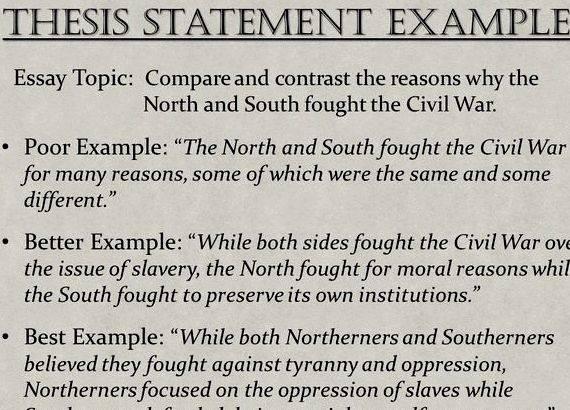

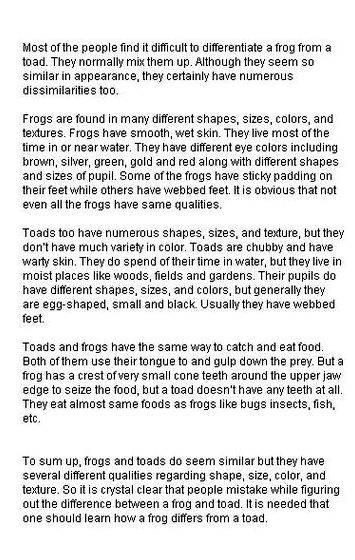

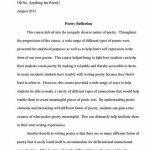 Thesis writing schedule for poets
Thesis writing schedule for poets Writing your thesis introduction sample
Writing your thesis introduction sample References in phd thesis writing
References in phd thesis writing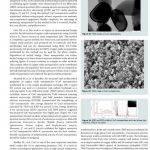 Copper oxide nanoparticles thesis writing
Copper oxide nanoparticles thesis writing Phd thesis proposal presentation ppt sample
Phd thesis proposal presentation ppt sample






